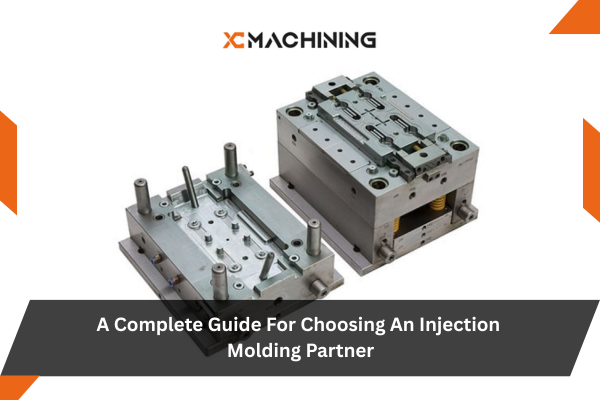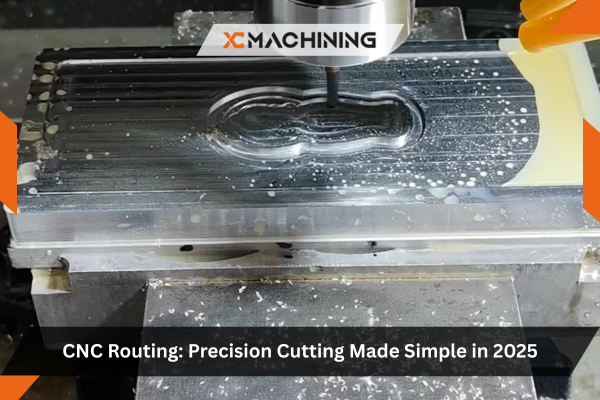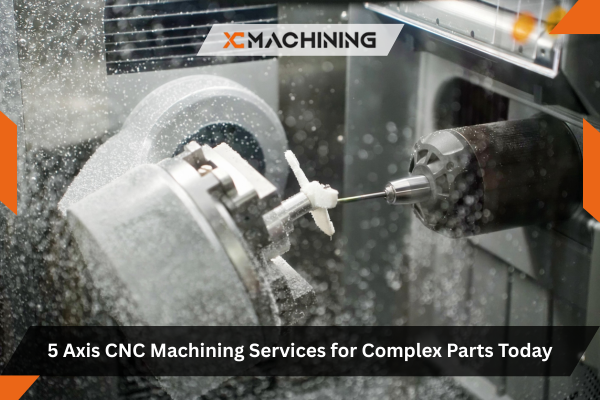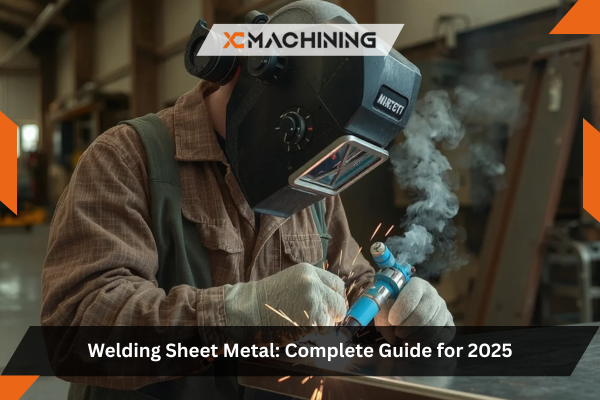What This Guide Covers
Choosing the right injection molding partner can determine whether your product succeeds or fails in the market. After 14 years helping companies select plastic injection molding companies for everything from consumer products to medical devices, I’ve seen brilliant products ruined by poor manufacturing partners and challenging designs succeed through excellent partnerships.
In this comprehensive guide:
- Critical factors for evaluating injection molding partners
- Questions you must ask before committing
- Red flags that indicate potential problems
- How to assess capabilities for different applications of injection molding
- Contract negotiation and relationship management
- Real-world selection criteria that matter
Whether you’re launching your first product requiring plastic injection molding service or switching from an existing plastic injection molding machine supplier, this guide provides practical insights from someone who has evaluated over 200 injection molding companies and managed relationships that produced millions of parts.
Table of Contents
Why Your Injection Molding Partner Choice Matters
Last year, a consumer electronics startup came to me after a devastating product launch failure. They’d chosen their injection molding partner based solely on price—$2.15 per part versus $2.85 from other bidders. Six months into production, they discovered the “cheaper” partner used inferior plastic injection molding materials that caused parts to crack under normal use. The recall cost $380,000, damaged their brand reputation, and delayed their next product launch by 9 months. The $0.70 per part savings cost them over $1 million when you factor in recalls, lost sales, and opportunity costs.
That story exemplifies why partner selection matters more than just getting the lowest quote. Your injection molding partner becomes an extension of your engineering and manufacturing team, affecting product quality, development speed, production reliability, and ultimately customer satisfaction.
Understanding Your Injection Molding Needs
Before evaluating partners, clearly define your requirements across different applications of injection molding:
Production Volume Requirements
Low volume (< 10,000 parts/year):
- May not justify expensive tooling
- Consider aluminum or prototype tooling
- More flexibility with smaller partners
- Per-part cost less critical
Medium volume (10,000-100,000 parts/year):
- Production-grade steel tooling justified
- Balance cost and capability
- Need reliable quality systems
- Established partners preferred
High volume (> 100,000 parts/year):
- Automation capabilities critical
- Multi-cavity tooling essential
- Quality certifications required
- Tier-1 injection molding companies needed
Real example: I worked with a toy manufacturer producing 500,000 units annually. We selected a partner with 16-cavity molds and automated assembly. A smaller shop bidding lower didn’t have the equipment or capacity for this volume—they would have failed within 3 months.
Material Requirements
Different materials require specific expertise in plastic injection molding applications:
Commodity plastics (PP, PE, PS):
- Most injection molding companies can handle
- Standard equipment and processes
- Lower cost tooling and production
Engineering plastics (PC, ABS, Nylon):
- Require better temperature control
- More expensive plastic injection molding machine equipment
- Tighter process windows
- Higher material costs
High-performance polymers (PEEK, Ultem, LCP):
- Specialized equipment required
- Expert process knowledge essential
- Limited supplier options
- Significantly higher costs
Special materials:
- PVC injection molding applications: Requires corrosion-resistant equipment, special handling
- Metal injection molding applications: Completely different technology, specialized partners
- Ceramic injection molding applications: Rare capability, very specialized
- Reaction injection molding applications: Different equipment, specific expertise
Critical question: Can your potential partner demonstrate experience with your specific material? Ask for samples and references.
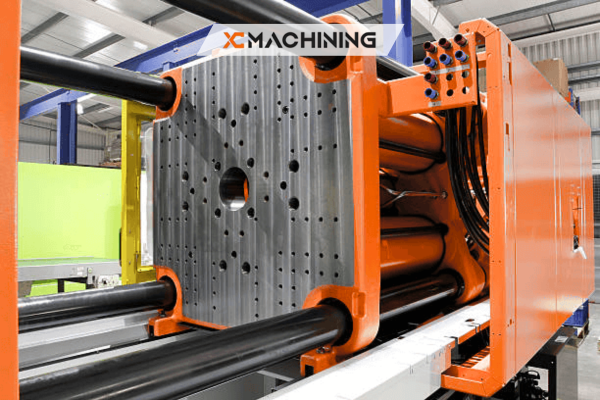
Quality and Certification Needs
Consumer products:
- ISO 9001 often sufficient
- UL certification if electrical
- Product safety testing
Medical devices:
- ISO 13485 mandatory
- FDA registered facility
- Clean room capabilities
- Biocompatible material expertise
- Strict documentation requirements
Automotive:
- IATF 16949 certification
- PPAP and APQP processes
- Specific OEM requirements
- Long-term capability commitments
Aerospace:
- AS9100 certification
- Material traceability
- Extensive documentation
- Limited supplier options
Reality check: A medical device client once wanted to use a low-cost overseas partner without ISO 13485 certification. I explained that FDA wouldn’t accept parts from an uncertified facility. We found a certified partner that cost 40% more but enabled them to actually sell their product legally.
Essential Evaluation Criteria
Based on evaluating hundreds of plastic injection molding companies, these factors predict partnership success:
1. Technical Capabilities
Equipment assessment:
| Equipment Type | Why It Matters | Questions to Ask |
|---|---|---|
| Plastic Injection Molding Machines | Tonnage range, precision, age | What tonnage range? Brand and age? Maintenance records? |
| Auxiliary Equipment | Material handling, drying, temperature control | What material handling systems? Drying equipment? Hot runners? |
| Tooling Capabilities | In-house vs outsourced, repair capability | In-house tool room? Can you maintain/repair molds? |
| Quality Equipment | CMM, inspection, testing | What inspection equipment? Dimensional capability? |
| Automation | Robotics, assembly, packaging | What automation capabilities? Lights-out operation? |
Process capabilities:
- Two-shot injection molding (multiple materials/colors)
- Overmolding (insert molding)
- Gas-assist or foam injection molding
- Micro-molding or thin-wall molding
- In-mold decoration or labeling
Real assessment: I toured a facility that claimed “state-of-the-art equipment.” Their newest plastic injection molding machine was 15 years old, poorly maintained, and covered in oil leaks. Maintenance records showed frequent breakdowns. We eliminated them immediately—old equipment causes quality problems and schedule delays.
2. Engineering Support
Design for manufacturability (DFM):
- Will they review your design before quoting?
- Can they suggest improvements?
- Do they use mold flow analysis?
- What’s their design feedback process?
Tooling design:
- In-house tool design capability?
- Experience with similar part geometries?
- Can they optimize gate locations and cooling?
- Do they provide tool design reviews?
Material selection:
- Can they recommend appropriate materials?
- Do they understand your application requirements?
- Will they provide material data sheets and certifications?
- Can they source and validate materials?
Best partners: The best plastic injection molding service providers act as engineering partners, not just contract manufacturers. They catch design issues early, suggest improvements, and help optimize your product for manufacturing success.
3. Quality Management Systems
Certifications:
- ISO 9001 (minimum for commercial work)
- Industry-specific certifications (ISO 13485, IATF 16949, AS9100)
- Customer-specific requirements
- Recent audit results available?
Quality processes:
- Statistical process control (SPC)
- First article inspection procedures
- In-process inspection protocols
- Final inspection and testing
- Non-conformance handling
- Corrective action systems
Documentation:
- Can they provide capability studies?
- What inspection reports do they provide?
- Material certifications and traceability?
- Process documentation and work instructions?
Warning sign: One company I audited claimed ISO 9001 certification but couldn’t produce their certificate or recent audit report. When we investigated, they’d let certification lapse 3 years earlier. Trust but verify.
4. Communication and Responsiveness
Initial interactions predict future relationship:
Red flags:
- Days to respond to inquiries
- Vague or incomplete quotes
- Reluctance to answer questions
- No technical contact available
- Dismissive of your concerns
Positive signs:
- Prompt, detailed responses
- Technical expertise evident
- Proactive communication
- Willingness to visit or host tours
- References provided willingly
Real disaster: A client ignored my advice and selected a partner who took 4 days to respond during quoting. During production, the partner went silent for 2 weeks when quality issues emerged. Communication problems that exist during sales only get worse during production.
5. Financial Stability
Why it matters: Your injection molding partner going bankrupt mid-project is catastrophic. You lose your tooling, production stops, and finding a new partner takes months.
Assessment methods:
- Request financial statements (if they’re willing to share)
- Check business credit reports
- Look for signs of financial stress (delayed equipment maintenance, unpaid vendors)
- Ask about ownership stability
- Verify they own their facility (landlord disputes cause shutdowns)
Diversification:
- Don’t be their only customer (you become hostage)
- Don’t be less than 5% of revenue (you won’t get attention)
- Ideally 10-25% of their capacity
Critical Questions to Ask Potential Partners
These questions reveal capability and reliability:
Technical Questions
About equipment:
- What plastic injection molding machine tonnage range do you have?
- How old is your equipment? Maintenance schedule?
- Do you have hot runner capabilities?
- What’s your maximum/minimum part size?
- Can you handle multiple materials (for metal injection molding applications or specialized plastics)?
About experience:
- Have you produced similar parts before? (Ask for samples)
- What industries do you serve?
- Can you provide references from similar applications?
- What volumes do you typically run?
- Have you worked with our specific material?
Quality Questions
- What quality certifications do you hold?
- Can I see recent audit results?
- What inspection equipment do you have?
- How do you handle non-conforming material?
- What’s your typical reject rate?
- Can you provide capability studies (Cpk data)?
Process Questions
- Do you provide DFM feedback?
- Do you use mold flow analysis?
- Where is tooling built? (In-house vs outsourced)
- How do you validate new tools?
- What’s your process for process validation?
- How do you handle engineering changes?
Business Questions
- What’s your typical lead time for tooling?
- What’s your production lead time?
- Minimum order quantities?
- Payment terms?
- Who owns the tooling? (This is critical!)
- What happens to tooling if we switch suppliers?
- Do you carry insurance for tooling damage?
Evaluating Quotes: Beyond Price
When comparing quotes from plastic injection molding companies:
Quote Completeness Checklist
Essential quote elements:
- Tooling cost (itemized)
- Per-part cost at different volumes
- Material specifications
- Lead time for tooling and production
- Minimum order quantity
- Payment terms
- Tooling ownership
- Warranty terms
- What’s included in per-part price (packaging? shipping?)
Warning: The cheapest quote often excludes costs that appear later. One client accepted a low bid that didn’t include material drying equipment rental ($800/month), secondary operations ($0.45/part), or packaging ($0.15/part). The “cheap” partner ended up costing more.
Total Cost Analysis
Consider beyond piece price:
True Cost = (Tooling Cost / Total Lifetime Volume) +
(Piece Price × Volume) +
(Quality Issues × Replacement Cost) +
(Development Time × Opportunity Cost) +
(Logistics and Inventory Costs)
Real calculation:
- Partner A: $1.85/part, excellent quality, on-time delivery
- Partner B: $1.45/part, 3% reject rate, frequent delays
Over 100,000 parts:
- Partner A: $185,000 in parts, $0 in rejects = $185,000
- Partner B: $145,000 in parts, $4,350 in rejects, $8,000 in expedite fees, $12,000 in customer delays = $169,350
Partner B was “cheaper” but caused $29,350 in additional costs beyond piece price.
Site Visits and Audits
Never commit without visiting the facility. Here’s what to look for:
Facility Assessment
Positive indicators:
- Clean, organized manufacturing floor
- Modern equipment well-maintained
- Climate-controlled environment
- Organized tool storage
- Clear quality inspection areas
- Safety equipment and protocols visible
- Employees wearing proper PPE
- Documented procedures at workstations
Red flags:
- Dirty, disorganized facility
- Oil leaks on machines
- Poor lighting
- No climate control (affects part quality)
- Damaged or missing safety equipment
- Employees without training
- No inspection procedures visible
- Materials stored improperly
People assessment:
- Are employees engaged or demoralized?
- Do they follow procedures?
- Is there clear supervision?
- What’s turnover like?
- Are operators cross-trained?
Contract Essentials
Critical contract terms:
Tooling Ownership
- Who owns the tooling? (You should)
- What happens to tooling if relationship ends?
- How is tooling stored and maintained?
- Insurance for tooling damage?
Quality Standards
- Dimensional tolerances clearly specified
- Material specifications and certifications
- Inspection and testing requirements
- Acceptance criteria defined
- Non-conformance procedures
- Warranty terms
Intellectual Property
- Confidentiality agreements (NDA)
- Design ownership
- Protection of proprietary information
- Restrictions on selling to competitors
Commercial Terms
- Pricing structure and escalation
- Minimum order quantities
- Lead times and flexibility
- Payment terms
- Contract duration and renewal
- Termination terms
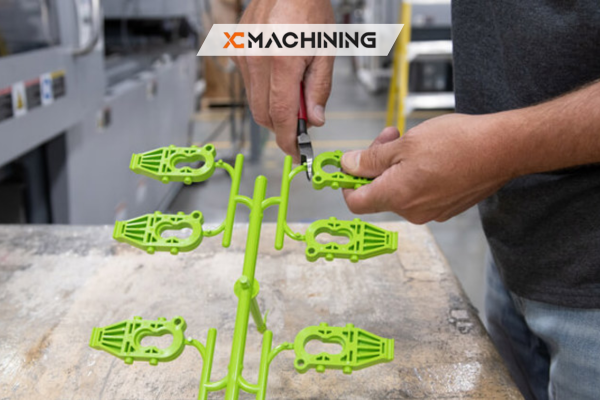
Building a Successful Partnership
Once you’ve selected your injection molding partner:
Onboarding Best Practices
Clear communication:
- Designate single points of contact both sides
- Regular status meetings scheduled
- Issue escalation procedures defined
- Quality metrics tracked and reviewed
Joint development:
- Collaborative approach to problem-solving
- Shared goals and metrics
- Investment in relationship building
- Long-term perspective
Performance monitoring:
- On-time delivery rates
- Quality metrics (rejects, returns)
- Responsiveness to issues
- Cost performance vs budget
Continuous improvement:
- Regular process reviews
- Cost reduction initiatives
- Quality improvement projects
- Technology upgrades
Conclusion
Choosing the right injection molding partner is one of the most important business decisions you’ll make for your product. After 14 years evaluating plastic injection molding companies and managing manufacturing relationships, I’ve learned that the best partnerships combine technical capability, quality systems, communication, and shared commitment to success.
Don’t make this decision based solely on price. The cheapest quote often becomes the most expensive option when quality problems, delays, and communication failures emerge. Instead, invest time in thorough evaluation: review capabilities, visit facilities, check references, and trust your instincts about cultural fit.
The right partner becomes an extension of your team, contributing engineering expertise, solving problems proactively, and delivering consistent quality. Whether you need plastic injection molding applications for consumer products, specialized capabilities like metal injection molding applications or ceramic injection molding applications, or high-volume production with advanced automation, the right partner exists—you just need to find them.
Start your search early, be thorough in evaluation, clearly define requirements, and build relationships based on mutual respect and shared success. Your injection molding partner choice will impact your product’s quality, your company’s reputation, and ultimately your business success for years to come.
Choose wisely, invest in the relationship, and never compromise on the factors that truly matter: capability, quality, communication, and commitment to your success.
FAQs
What should I prioritize first: price or capability?
Capability. Price is meaningless if parts fail validation or scrap rates climb.
How many suppliers should I short-list?
Three to five is typical. Enough to compare, not so many that you dilute the technical conversation.
Should I always require PPAP?
For regulated or safety-critical parts—yes. For simpler consumer products, a lighter FAI plus control plan may suffice.
How do I verify the supplier’s real press capacity?
Ask for a live capacity plan or machine utilization report, and verify with site visits.
Can I transfer tools mid-program if the partner underperforms?
Yes—but only if you negotiate transfer rights and digital tool files up front (another reason to keep a rigorous injection molding vendor evaluation checklist).

